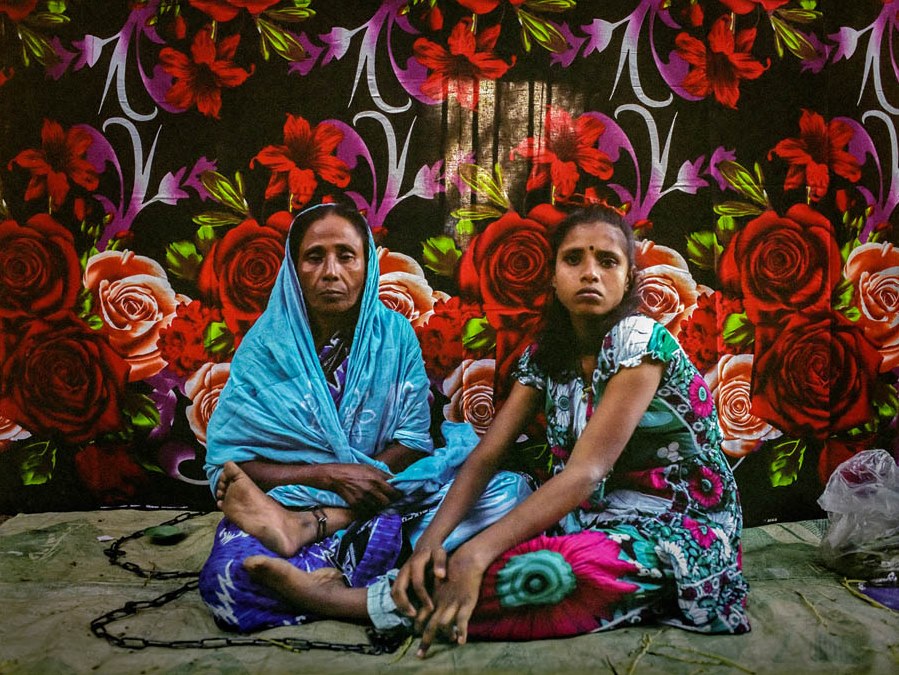From Brisbane to the streets of Dhaka
Living the very life of the people you photograph is an unusual experience for any photographer.
But this is exactly what Shehab Uddin set out to do when he decided to immerse himself wholeheartedly into the lives of three impoverished families in his birthplace of Bangladesh.
So committed was he to his cause, that Shehab, a Queensland College of Art Doctoral candidate, chose to live in abject poverty with each family — amidst city street dwellers, rural villagers and slums.
To Shehab, such photos are for more than just a story or even the principle behind it.
“It is not hard to take a good image that fits the bill aesthetically and technically speaking, but it is extremely difficult to take an image that tells the real story in the way it feels rather than just the way it looks,” Shehab says.
Hisdedication to his workhas since garnered attention worldwide, including on the New York Times Lens blog.
A change of perspective
“I’ve stretched out on the ground hundreds of times to take a photo from what I believed to be the perspective of impoverishment — but when I put my head down on that street floor to sleep for the first night, I was overwhelmed with a very different feeling.
“I felt a deep sense of vulnerability, and I felt part of a world to which I did not belong.
“I had a breakdown – all my pride, class consciousness, economic stability and all my confidence about life grounded with the street dusts,” he explains.
Despite the confronting and sobering nature of such a series, Shehab explains he is far more comfortable working in a space that involves emotion and values, as his own beginnings inspired him to raise awareness of those in such vulnerable positions.

Shehab next tells the story of the first family he met upon his return to Bangladesh — a family that he himself now feels very much a part of.
“Mali is a young girl with extreme mental and physical disabilities who lives with her single mother, Jarina Khala on the street outside Kamalapur Railway Station in Dhaka.
“To see a mother with no other option but to chain her daughter up each day so she can go to work and know her daughter is safe, is not something you can ever capture in one photograph, in one meeting.
“To me, it would be wrong to walk into these lives, take a photo and walk straight out again.
“How could such an image ever truly convey these feelings and the situation these women are faced with?” he says.

Telling the story together
Through what Shehab calls “collaborative storytelling” he seeks to give voice back to these families and close the gap between ‘them’ and ‘us’.
“Poverty is simply accepted as a social institution, which sustains the unfair distribution of wealth throughout the world.
“As a result, it is difficult or simply impossible for people to break the chain of their own impoverishment.
“The aim should be to recognise impoverished people as multidimensional so as to change the ways in which audiences understand their lives and communities.”
In attempting to do just this, Shehab himself says he has formed lasting relationships and “a type of compassion that can never be broken”.
“I realised very early on, that entwining my life with theirs was not something I could then break off and walk away from, the emotions were too strong,” he says.
Shehab now maintains regular contact with Mali (who he also sought professional medical assistance for) and Jarina Khala, along with Bellal Bhai’s family who are rural villagers, and Nurjahan Khala’s family who live in a slum.
So strong were the bonds that since returning to his home in Brisbane, Shehab’s wife and daughter have now also developed connections with each of the families.
The images Shehab captured span three years and form a three part series entitled “Chain of Poverty” with each part of the story entitled separately — “No Life on the Street”, “Born Into a Poor Family” and “This is the Life”.
Exhibitions are currently underway, not on the white walls of a gallery, but in the very locations throughout Bangladesh where they were photographed.

And the results are equally emotional for Shehab.
“Form the first show, I received so many comments and responses,” he says.
“Most of these people said they had never seen an exhibition in their life, it was so new to them.
“They had never previously realised that the story of life could be told and understood so deeply and easily through images.”
Following two more showings in the streets of Bangladesh, Shehab plans to exhibit the images in Brisbane and publish a book on the series in mid-2015.
Learn more:http://www.shehabuddin.com/about.php
